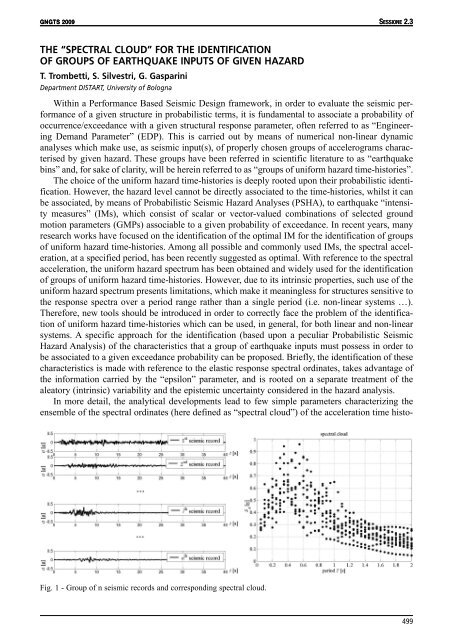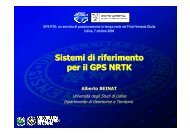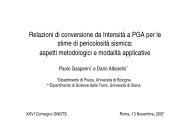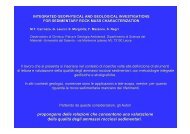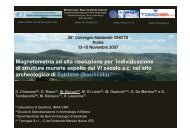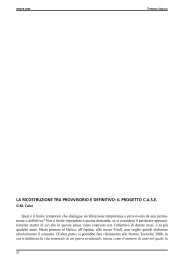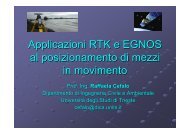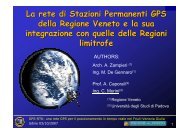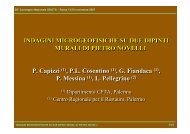Create successful ePaper yourself
Turn your PDF publications into a flip-book with our unique Google optimized e-Paper software.
GNGTS 2009 SESSIONE <strong>2.3</strong><br />
THE “SPECTRAL CLOUD” FOR THE IDENTIFICATION<br />
OF GROUPS OF EARTHQUAKE INPUTS OF GIVEN HAZARD<br />
T. Trombetti, S. Silvestri, G. Gasparini<br />
Department DISTART, University of Bologna<br />
Within a Performance Based Seismic Design framework, in order to evaluate the seismic performance<br />
of a given structure in probabilistic terms, it is fundamental to associate a probability of<br />
occurrence/exceedance with a given structural response parameter, often referred to as “Engineering<br />
Demand Parameter” (EDP). This is carried out by means of numerical non-linear dynamic<br />
analyses which make use, as seismic input(s), of properly chosen groups of accelerograms characterised<br />
by given hazard. These groups have been referred in scientific literature to as “earthquake<br />
bins” and, for sake of clarity, will be herein referred to as “groups of uniform hazard time-histories”.<br />
The choice of the uniform hazard time-histories is deeply rooted upon their probabilistic identification.<br />
However, the hazard level cannot be directly associated to the time-histories, whilst it can<br />
be associated, by means of Probabilistic Seismic Hazard Analyses (PSHA), to earthquake “intensity<br />
measures” (IMs), which consist of scalar or vector-valued combinations of selected ground<br />
motion parameters (GMPs) associable to a given probability of exceedance. In recent years, many<br />
research works have focused on the identification of the optimal IM for the identification of groups<br />
of uniform hazard time-histories. Among all possible and commonly used IMs, the spectral acceleration,<br />
at a specified period, has been recently suggested as optimal. With reference to the spectral<br />
acceleration, the uniform hazard spectrum has been obtained and widely used for the identification<br />
of groups of uniform hazard time-histories. However, due to its intrinsic properties, such use of the<br />
uniform hazard spectrum presents limitations, which make it meaningless for structures sensitive to<br />
the response spectra over a period range rather than a single period (i.e. non-linear systems …).<br />
Therefore, new tools should be introduced in order to correctly face the problem of the identification<br />
of uniform hazard time-histories which can be used, in general, for both linear and non-linear<br />
systems. A specific approach for the identification (based upon a peculiar Probabilistic Seismic<br />
Hazard Analysis) of the characteristics that a group of earthquake inputs must possess in order to<br />
be associated to a given exceedance probability can be proposed. Briefly, the identification of these<br />
characteristics is made with reference to the elastic response spectral ordinates, takes advantage of<br />
the information carried by the “epsilon” parameter, and is rooted on a separate treatment of the<br />
aleatory (intrinsic) variability and the epistemic uncertainty considered in the hazard analysis.<br />
In more detail, the analytical developments lead to few simple parameters characterizing the<br />
ensemble of the spectral ordinates (here defined as “spectral cloud”) of the acceleration time histo-<br />
Fig. 1 - Group of n seismic records and corresponding spectral cloud.<br />
499


